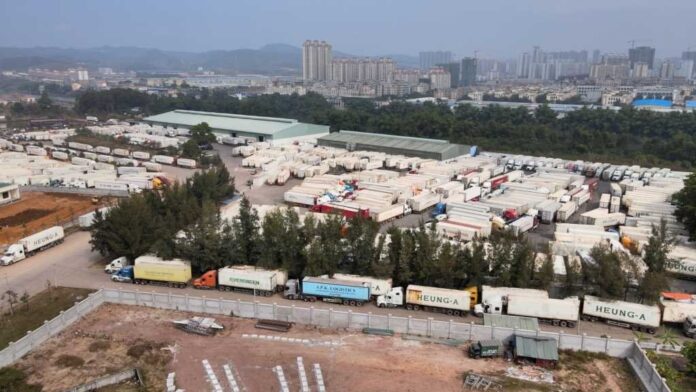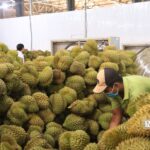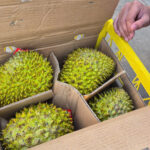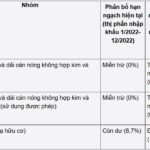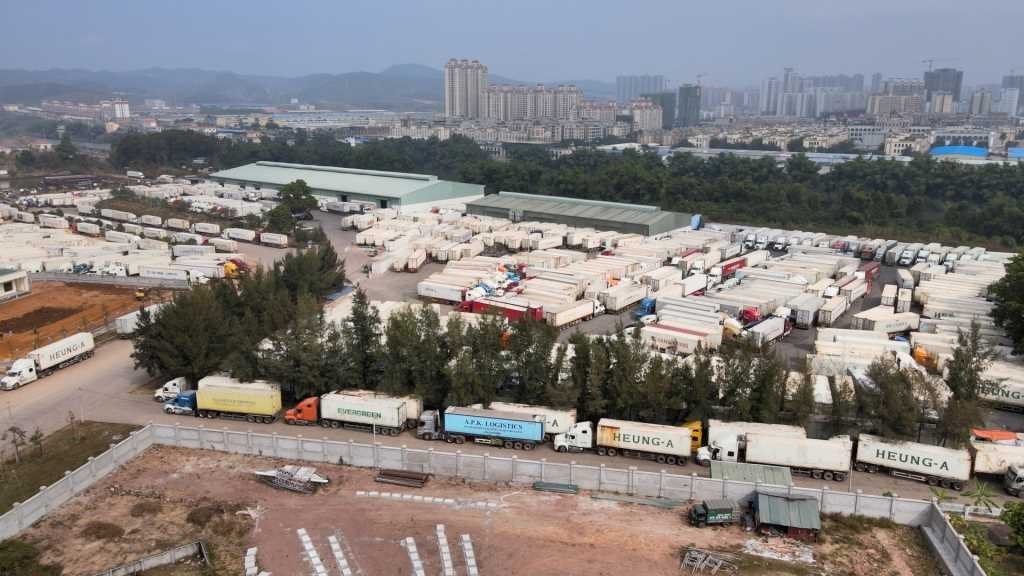
The beautiful landscape of Quang Ninh province, with its mountainous terrain and coastal borders, including the city of Mong Cai, a vital trade hub.
Quang Ninh shares a national border and sea border with the People’s Republic of China. On land, the districts of Binh Lieu, Hai Ha, and the town of Mong Cai adjoin China’s Fangcheng County and Dongxing Town in Guangxi Province. This proximity presents a unique opportunity for Quang Ninh to flourish in cross-border import and export activities.
According to statistics, between 2020 and 2024, the province’s estimated export turnover reached over $16 billion, with an average growth rate of 11.2% per year, far surpassing the set target of 5-7%.
The export structure has become increasingly diverse, featuring high-tech and value-added products such as electronic equipment, cotton fiber, garments, and solar panels.
Nearly 2,000 enterprises in the province are engaged in import and export activities, and their market reach has expanded from 54 to nearly 80 countries and territories.
Notably,
in the first four months of 2025, the province’s export turnover reached an estimated $1.27 billion
, a 16.1% increase compared to the same period in 2024. During this period, import turnover also rose by 16.0%, reaching $1.414 billion.
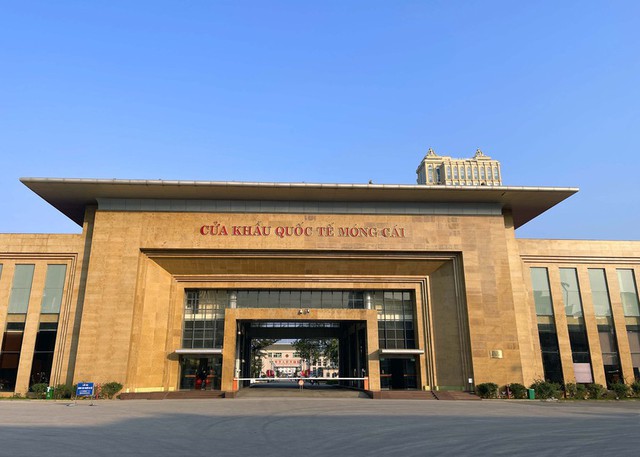
The bustling city of Mong Cai, located at the northeastern tip of Quang Ninh province, serves as a vital trade gateway to China.
Among the localities bordering China, Mong Cai stands out as the northeastern gateway of Quang Ninh province. Its strategic location, with access to both the sea and the border, makes it a crucial link in the economic corridor connecting Kunming, Lao Cai, Hanoi, Haiphong, and Quang Ninh. Mong Cai has been designated as a significant international cargo transit hub between Vietnam and China.
In recent years, Mong Cai has witnessed a remarkable surge in import and export activities, becoming the primary driver of economic growth in the border area and solidifying its position as the leading border trade hub in Quang Ninh province.
According to the Quang Ninh provincial portal, the city boasts five official border gates and open paths for import and export activities: Mong Cai International Border Gate, Bac Luan II, Hai Yen Km3+4 temporary bridge, Ka Long, and Po Hen. Notably, the Hai Yen Km3+4 temporary bridge has emerged as a bustling transit point for the clearance of Vietnamese agricultural products destined for China.

The bustling temporary bridge at Hai Yen Km3+4, facilitating the efficient transit of goods between Vietnam and China.
The import and export turnover through Mong Cai’s border gates has consistently maintained high levels of stability and growth. In the first quarter of 2025 alone, the total import and export turnover through Mong Cai reached approximately $1.6 billion, marking an almost 12% increase compared to the same period last year. Exports accounted for about 55% of this turnover and consisted mainly of agricultural, aquatic, and consumer products, while the remaining imports included electronic components and machinery for production.
As of the first quarter of 2025,
720 enterprises had registered for customs procedures in the area
, reflecting a significant increase of 128 enterprises compared to the previous year. Notably, 515 of these enterprises were from other provinces.
For the year 2025, Mong Cai has set an ambitious target for state budget revenue from import and export activities, aiming to reach VND 2,800–3,000 billion, the highest goal to date.
Leveraging its geographical advantages, well-developed border gate infrastructure, and rich experience in border trade, Mong Cai aspires to become the leading logistics and international trade center in the northeastern region.
To achieve this vision, the city is currently working on plans to develop special economic zones integrated with modern logistics services, encouraging the growth of transportation, warehousing, and cross-border e-commerce enterprises. Additionally, Mong Cai aims to further expand cooperation with southern Chinese localities, promote the opening of road and sea transport routes, and establish a new logistics corridor connecting Mong Cai, Guangxi, Hainan, and ASEAN.
Why Do Businesses Claiming to Be Drug-Free Still Test Positive for Saffron in Their Durian Fruits?
The discovery of high levels of cadmium in durian is primarily due to soil pollution, prolonged use of fertilizers and pesticides in cultivation. Additionally, the use of color enhancers by some businesses during the preliminary processing stage further exacerbates the issue, resulting in the presence of Sudan Yellow, a harmful dye, in the fruit.
“Removing Vietnam’s Steel from the Safeguard Exclusion List”
The UK Trade Remedies Authority has proposed removing Vietnam and five other developing countries from the list of exemptions to the safeguard measures on steel products. This proposal is a significant development, as it could have a substantial impact on the steel industry in these nations. With a potential removal from the exemption list, the steel industries in Vietnam and the other affected countries may face new challenges and obstacles in their trade activities with the UK. The proposal is currently under consultation, and the final decision is awaited. The outcome will undoubtedly shape the future landscape of the steel market, influencing trade relations and strategies for all involved parties.

